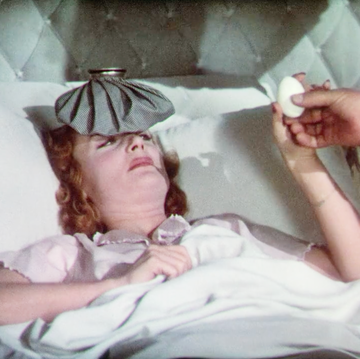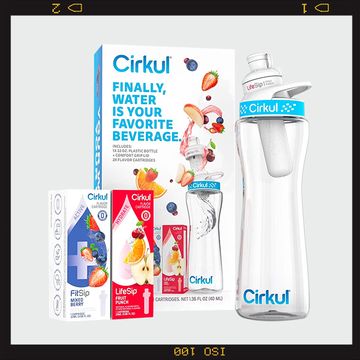1. Most sexual health care services, including contraceptives, are now free thanks to the Affordable Care Act. "Most sexual and reproductive health care is consumed by women, which puts them at more of a financial burden than men," says Dr. E.W. Emanuel, OB/GYN, "but that has largely been eliminated." Emanuel advised on a new guide launched by the National Coalition for Sexual Health last week, which tells ~*~MiLLeNniALs~*~* everything they need to know about having a healthy sex life. He says to check with your doctor or your local clinic to see how much the ACA covers for you, and assures me that just about everything is free or much cheaper, depending on your income and insurance situation.
2. Pap smears do NOT test for most STIs. They only test for abnormal cervical cells that may be caused by HPV. That means that getting an annual Pap is not enough, especially if you're having a lot of sex. "Chlamydia and gonorrhea are tested for with one single test, and that is recommended annually for women under 25," says Emanuel. Tests for any other STIs come individually.
3. Many STIs don't have any symptoms, but they can still have serious side effects like pelvic inflammatory disease, ectopic pregnancy, and infertility.
4. Twenty- to twenty-four-year-olds have the most STIs of any age group. HPV is particularly rampant for women in this age group, mainly because of #3. "Many people are not aware of HPV," says Emanuel, "But chlamydia is still the most common for early twentysomethings."
5. Approximately 24,000 American women become infertile each year from undiagnosed STIs. "Most women don't seek treatment until there's pain or discharge," says Emanuel. "Some women get into trouble when the infection is silent." We've been over this, guys: The safest thing is to get checked regularly. It's free! No excuses.
6. All sexually active women and men are likely to get HPV at some point in their lives. Here's a crazy fact: 79 million people are currently infected with HPV. "If you take 100 individuals who have no symptoms whatsoever and you screen them for HPV, more than 90 percent will show up positive," says Emanuel. "Not all strains cause cervical cancer, but if you have a low-risk strain, it can progress to a high-risk strain if you let it go untreated." Another common misconception: that HPV can only cause cervical cancer in women. The truth: It actually puts men at risk for penile cancer too.
7. You can still get the three-dose HPV vaccine series up until the age of 26. AND IT'S FREE! "Women weren't getting it because it used to be expensive and some insurance didn't cover it at all. Or they thought they were too old to get it," Emanuel says. "Now even if you don't have insurance you can get it for free at most free clinics or for a greatly reduced price at others. And you can get it until you're 26."
8. Twentysomething women (ages 20-29) have more unintended pregnancies than teen girls (ages 15-19). Emanuel attributes this to twentysomethings being sloppier with their contraception. More than 1 million twentysomethings get accidentally pregnant every year, versus 883 thousand teens. Come onnnnnn, you guys.
9. Chlamydia is one of the leading causes of infertility, but, if detected early, it can usually be easily treated with antibiotics. Other causes can be gonorrhea or endometriosis, which is not an STI. Birth control does decrease your risk of chlamydia progressing to pelvic inflammation and infertility, but also just get checked every year, OK? It's only treatable if you catch it early.
Check out the National Coalition for Sexual Health's new sexual health guide here.
RELATED:
Ask Dr. Iris: I Have Really Bad Cramps All Month Long
Ask Dr. Iris: Are My Labia Too Long?
Follow Emma on Twitter.
Photo credit: Getty Images

Emma Barker edits longform reporting at Cosmopolitan. She lives with her husband in Brooklyn, NY.












